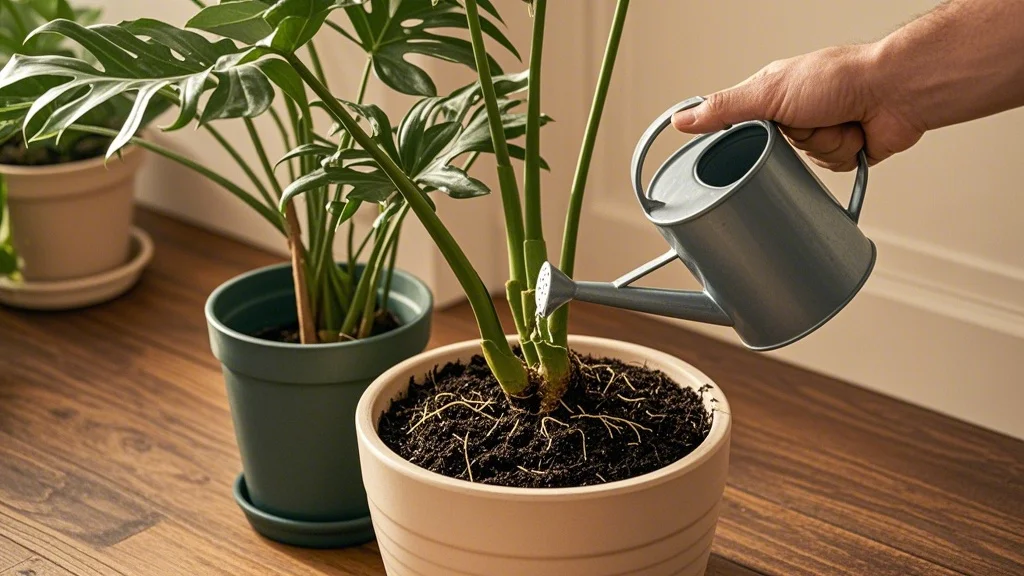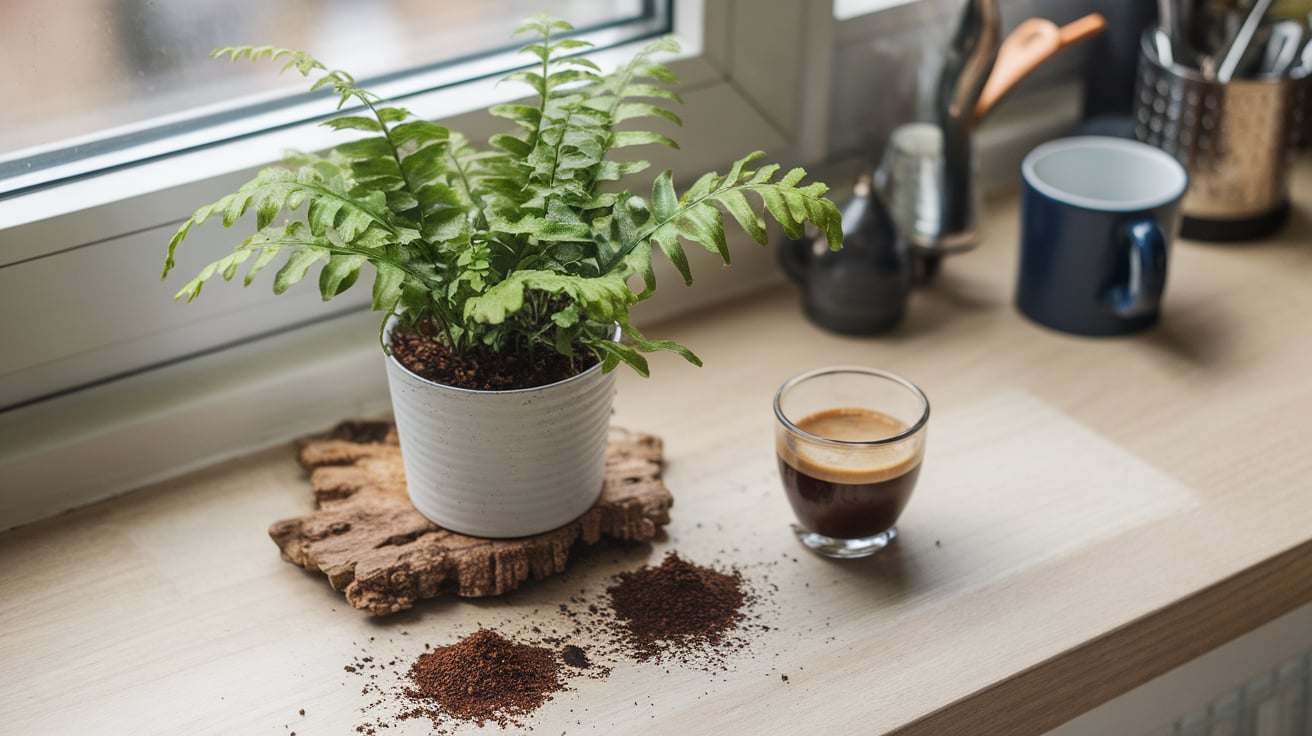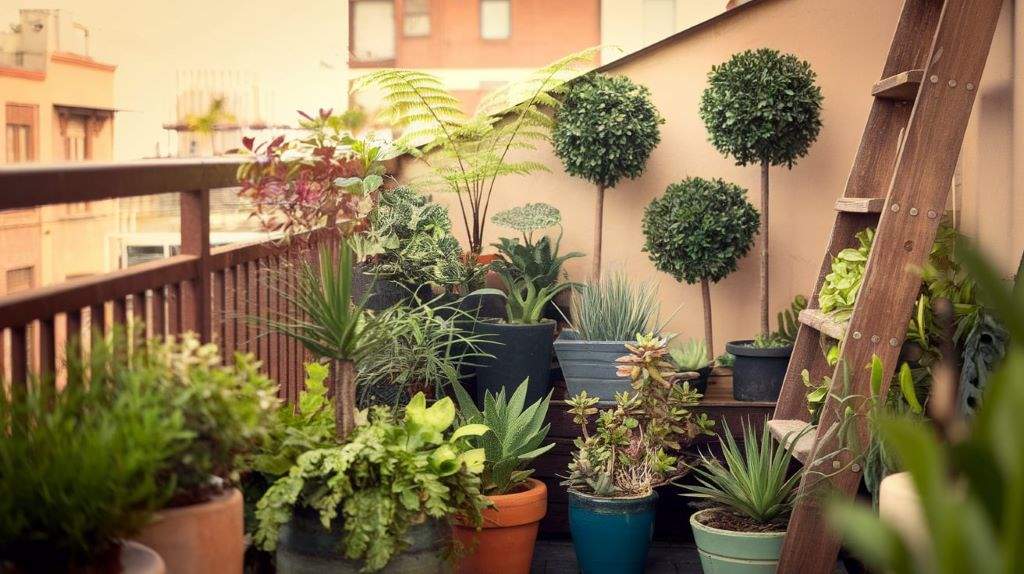As intermediate plant owners and technique-focused growers, you’re always looking for ways to optimize your plants’ health and growth. One crucial aspect of plant care is fertilization, and the method you choose to apply liquid fertilizer can significantly impact your plants’ nutrient absorption and overall well-being. In this comprehensive guide, we’ll explore two popular techniques for applying liquid fertilizer: top watering and bottom feeding. We’ll compare their effectiveness, discuss the pros and cons of each method, and provide practical tips for implementing these techniques with various plants.
Contents
- 1 Understanding Liquid Fertilizers
- 2 Top Watering: The Traditional Approach
- 3 Bottom Feeding: The Alternative Approach
- 4 Comparing Effectiveness: Top Watering vs. Bottom Feeding
- 5 Hybrid Approach: Combining Top Watering and Bottom Feeding
- 6 Tips for Successful Liquid Fertilizer Application
- 7 Troubleshooting Common Fertilization Issues
- 8 Conclusion
Understanding Liquid Fertilizers
Before diving into application techniques, let’s briefly review what liquid fertilizers are and why they’re essential for plant health.
What are Liquid Fertilizers?
Liquid fertilizers are nutrient-rich solutions that provide essential elements to plants in a readily available form. They typically contain a balanced mix of macronutrients (nitrogen, phosphorus, and potassium) and micronutrients (iron, manganese, zinc, etc.) necessary for plant growth and development.
Benefits of Liquid Fertilizers
- Quick absorption: Plants can uptake nutrients from liquid fertilizers more rapidly than from granular forms.
- Precise dosage: It’s easier to control the amount of nutrients applied to each plant.
- Versatility: Liquid fertilizers can be used for both soil and hydroponic systems.
- Even distribution: When applied correctly, liquid fertilizers ensure uniform nutrient distribution throughout the growing medium.
Top Watering: The Traditional Approach
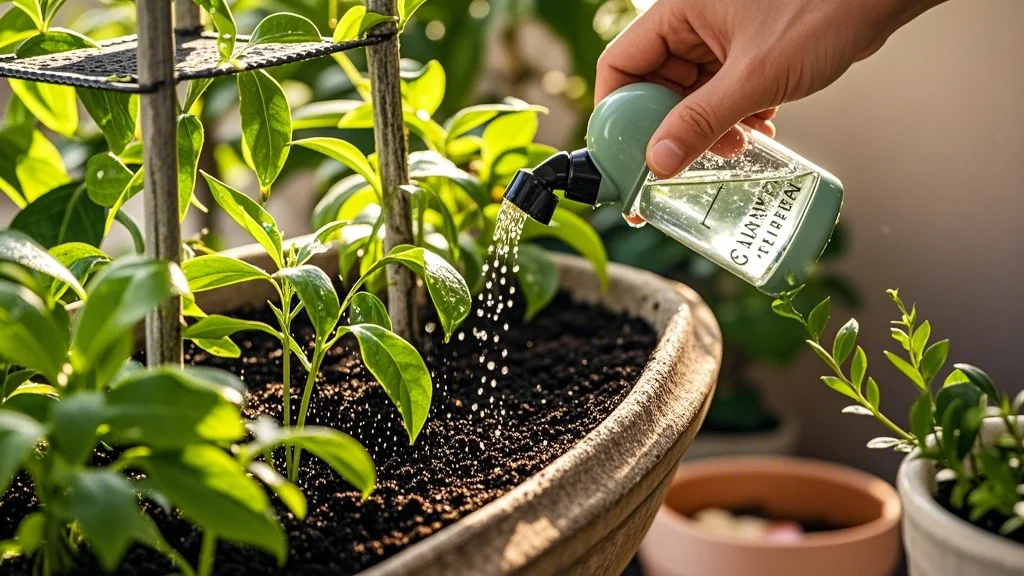
Top watering is the most common method of applying liquid fertilizer to plants. Let’s explore this technique in detail.
How to Top Water with Liquid Fertilizer
- Dilute the fertilizer according to the manufacturer’s instructions.
- Water the plant thoroughly with plain water to moisten the soil.
- Apply the diluted fertilizer solution directly to the soil surface, ensuring even coverage.
- Allow the solution to soak into the soil, avoiding contact with leaves when possible.
Pros of Top Watering
- Familiarity: Most gardeners are already comfortable with this method.
- Versatility: Suitable for a wide range of plants and pot sizes.
- Visual assessment: Easy to see how much fertilizer solution has been applied.
- Foliar feeding: Some nutrients can be absorbed through the leaves when top watering.
Cons of Top Watering
- Potential for leaf burn: If the fertilizer solution contacts the leaves, it may cause damage.
- Uneven distribution: Nutrients may not reach all parts of the root system equally.
- Salt buildup: Over time, mineral salts can accumulate on the soil surface.
- Soil compaction: Frequent top watering may lead to soil compaction, especially in heavy soils.
Best Plants for Top Watering
Top watering is suitable for most plants, but it’s particularly effective for:
- Succulents and cacti
- Plants with shallow root systems
- Large, established plants
- Plants in hanging baskets or wall-mounted planters
Bottom Feeding: The Alternative Approach
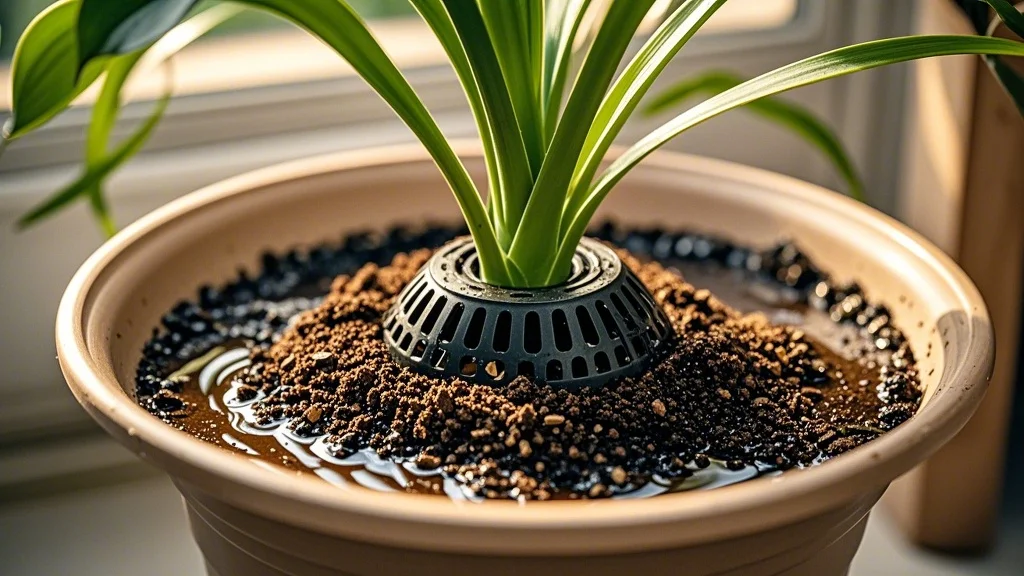
Bottom feeding, also known as bottom watering or sub-irrigation, is an alternative method of applying liquid fertilizer that has gained popularity among plant enthusiasts.
How to Bottom Feed with Liquid Fertilizer
- Dilute the fertilizer according to the manufacturer’s instructions.
- Fill a tray or saucer with the fertilizer solution.
- Place the plant pot in the tray, ensuring the drainage holes are in contact with the solution.
- Allow the plant to absorb the solution for 15-30 minutes, or until the top layer of soil feels moist.
- Remove the plant from the tray and allow excess water to drain.
Pros of Bottom Feeding
- Even nutrient distribution: Encourages roots to grow downward, accessing nutrients throughout the soil.
- Reduced risk of leaf burn: Fertilizer solution doesn’t come into contact with foliage.
- Water conservation: Less water is lost to evaporation or runoff.
- Prevents overwatering: Plants only take up as much water as they need.
Cons of Bottom Feeding
- Time-consuming: Can be more labor-intensive, especially for large collections of plants.
- Risk of waterlogging: If left too long, plants may absorb excess water.
- Not suitable for all plants: Some species prefer drier conditions between waterings.
- Potential for salt buildup: Minerals may accumulate at the bottom of the pot over time.
Best Plants for Bottom Feeding
Bottom feeding is particularly effective for:
- African violets and other sensitive-leaved plants
- Plants prone to fungal issues
- Plants that prefer consistent moisture levels
- Small to medium-sized potted plants
Comparing Effectiveness: Top Watering vs. Bottom Feeding
To determine which method is more effective, we need to consider several factors:
Nutrient Absorption
Bottom feeding generally provides more even nutrient distribution throughout the soil, encouraging roots to grow downward and access a larger nutrient reservoir. Top watering can lead to uneven nutrient distribution, with higher concentrations near the soil surface.
Water Efficiency
Bottom feeding is typically more water-efficient, as less water is lost to evaporation or runoff. Top watering can be less efficient, especially if water runs off the soil surface before being absorbed.
Plant Health
Both methods can support healthy plant growth when done correctly. However, bottom feeding may reduce the risk of fungal diseases by keeping foliage dry, while top watering can sometimes lead to leaf burn or fungal issues if water sits on leaves.
Ease of Use
Top watering is generally easier and quicker, especially for large plants or numerous pots. Bottom feeding can be more time-consuming but may require less frequent application.
Soil Quality
Bottom feeding can help maintain soil structure by preventing compaction from repeated top watering. However, it may lead to salt buildup at the bottom of the pot if not managed properly.
Hybrid Approach: Combining Top Watering and Bottom Feeding
For many plants, a combination of both techniques can provide the best results. Here’s how to implement a hybrid approach:
- Use bottom feeding as your primary fertilization method, applying it every 2-4 weeks during the growing season.
- Supplement with occasional top watering to flush out any accumulated salts and provide a thorough soil soak.
- Monitor your plants closely and adjust the frequency of each method based on their individual needs.
Tips for Successful Liquid Fertilizer Application
Regardless of the method you choose, follow these tips for optimal results:
- Always dilute fertilizers according to the manufacturer’s instructions.
- Fertilize during the active growing season, typically spring and summer.
- Reduce or stop fertilization during the plant’s dormant period.
- Use room temperature water to avoid shocking the plant’s roots.
- Monitor your plants for signs of over-fertilization, such as leaf burn or stunted growth.
- Flush the soil with plain water periodically to prevent salt buildup.
- Adjust your fertilization schedule based on the specific needs of each plant species.
Troubleshooting Common Fertilization Issues
Leaf Burn
Symptom: Brown or yellow edges on leaves
Cause: Over-fertilization or direct contact with fertilizer solution
Solution: Reduce fertilizer concentration and frequency, and avoid getting solution on leaves
Stunted Growth
Symptom: Slow or no growth despite regular fertilization
Cause: Nutrient imbalance or over-fertilization
Solution: Adjust fertilizer type or concentration, and ensure proper light and water conditions
Salt Buildup
Symptom: White crust on soil surface or pot edges
Cause: Mineral accumulation from fertilizers
Solution: Flush the soil thoroughly with plain water and consider switching to rainwater or distilled water
Root Rot
Symptom: Wilting, yellowing leaves, and mushy roots
Cause: Overwatering, often exacerbated by poor drainage
Solution: Improve drainage, reduce watering frequency, and consider repotting in fresh, well-draining soil
Conclusion
Both top watering and bottom feeding have their place in plant care, and the most effective method often depends on the specific plant, growing conditions, and your personal preferences. By understanding the pros and cons of each technique and implementing them thoughtfully, you can optimize your plants’ nutrient absorption and overall health.
Remember that fertilization is just one aspect of plant care. To achieve the best results, combine proper fertilization techniques with appropriate light, water, and soil conditions. Pay attention to your plants’ individual needs and be prepared to adjust your care routine as they grow and change.
As you experiment with these liquid fertilizer application techniques, you’ll develop a deeper understanding of your plants’ preferences and how to best support their growth. Happy growing!

